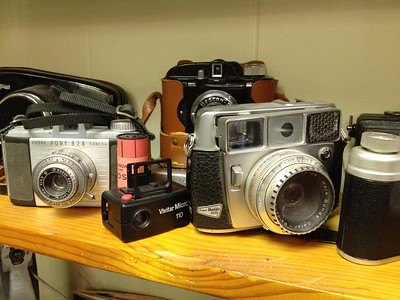What’s the difference between messages you get for Cyber Monday, Black Friday, political candidates, and Giving Tuesday? Unfortunately, it seems like not a whole lot, and many of them look like spam.
According to the Giving Tuesday website, “Giving Tuesday is a global generosity movement unleashing the power of radical generosity.” In theory, that sounds nice, but in reality, it’s a day when nonprofit organizations unleash an onslaught of transactional fundraising appeals by email and social media.
Starting in 2012, Giving Tuesday has taken place the Tuesday after Thanksgiving. This year it will be on November 28.
I’m not going to tell you whether or not you should participate in Giving Tuesday. Perhaps you’ve participated in the past and it’s been successful (one way to measure if it was successful is if those donors give again), or maybe it wasn’t. Perhaps you’re planning to participate for the first time. Maybe you’re on the fence.
Whether you participate or not, Giving Tuesday is part of the nonprofit landscape and if you’re doing a year-end appeal, you’ll need to factor it into your campaign. If you do participate, you want to make it a better experience for your donors instead of the usual barrage of generic, transactional appeals. And, you don’t want your messages to resemble spam.
Here are a few things to keep in mind as Giving Tuesday approaches.
Just because it’s Giving Tuesday isn’t a compelling reason to give
I see so many email messages that say donate because it’s Giving Tuesday. Many donors don’t care if it’s Giving Tuesday or if it’s your “annual appeal.” That’s often not why they donate. They give because they care about your cause and want to help make a difference.
Let them know that with their help, Kara doesn’t have to go to bed hungry or Daniel can boost his reading skills.
People and communities are still struggling. You need to acknowledge this in your appeals.
It’s not just about the money
A successful Giving Tuesday campaign is about more than just raising a lot of money. You also want to build relationships and make your donors feel good about supporting your organization. This is where it often falls short.
I’m not a huge fan of Giving Tuesday or any giving days, for that matter, because they focus too much on getting donations. Many of these donors are first-time donors who don’t give again. The end result is you’ve just spent a lot of time and effort on getting one-time gifts. That’s not what you want. You need donors who will support you for many years.
Make it personal and segment your donors
Don’t just blast a bunch of generic, transactional appeals that resemble Cyber Monday ads or those relentless requests for political donations. I receive so many political emails, which are just “noise” that I end up ignoring. You don’t want that. You want to attract your donors’ attention in a good way. A more relationship-oriented subject line can help.
You also don’t want to send all your donors the same appeal. If someone donated last year on GivingTuesday, this is the perfect opportunity to thank them for that gift and ask them to donate again this year. If they donated two weeks ago, maybe they shouldn’t get an appeal right now.
Segment your donors. Acknowledge past donors and make a connection with potential donors.
Focus on building relationships with your donors instead of just begging for donations.
Also, if you’re sending an appeal to your monthly donors, recognize them as monthly donors and ask them to give an additional gift (many of them will). They get their own thank you, too. Monthly donors are one of your most loyal types of donors. Be sure to make them feel special.
If you’re one of the few organizations that sends more personalized appeals, then kudos to you because that’s what everyone needs to do.
Use Giving Tuesday as a way to follow up with your donors
If you don’t want to launch a full Giving Tuesday campaign (understandable), it can be a great opportunity to follow up with people who haven’t donated to your year-end appeal. You should be sending regular reminders, anyway.
Send email and social media messages before and on Giving Tuesday encouraging people to donate. You can use the Giving Tuesday logos, etc. if you’d like. Obviously, you’ll want to keep following up with anyone who didn’t donate on Giving Tuesday.
Remember, your donors will be barraged with email and social media messages on Giving Tuesday. Make yours stand out and be prepared to keep following up.
Put gratitude front and center
Your donors should be feeling the love right after they make their donation.
Make sure you have an engaging thank you landing page and thank you email for your online donors. You could even create ones especially for Giving Tuesday. Then you need to follow that with a phone call, handwritten note, or thank you letter.
Send welcome packages to new donors or welcome back messages to current donors.
Go the extra mile and do a good job of thanking these donors – both right after they’ve made their donation and throughout the year.
We’re going to skip Giving Tuesday
Maybe you’ll decide you’re going to skip Giving Tuesday altogether. If that’s the case, you may want to hold off on sending email on Giving Tuesday, as well as Black Friday and Cyber Monday. Remember, other organizations will be participating and any messages you send will be competing with the onslaught of Giving Tuesday appeals.
Before and after Giving Tuesday, use this opportunity to stand out by keeping your fundraising campaign focused on gratitude and relationship building. Year-end is a good time to ramp up your donor communication (examples include thank you messages, holiday greetings, and updates) so people don’t think you’re only asking them for money.
Give back to your donors
I think you’ll find your Giving Tuesday campaign, or any fundraising campaign, will be more successful if you focus on more than just the giving part. And a big part of a successful campaign is getting repeat donations. This means giving back to your donors, as well.
Always focus on relationships, not the transaction, and make sure your messages don’t look like spam.



